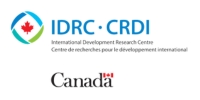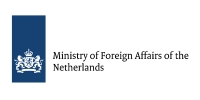Locally - Led Adaptation Metrics for Africa (LAMA)
The LAMA Platform aims to convene diverse stakeholders engaged in LLA initiatives across Africa, facilitating the exchange of experiences in co developing metrics, tools, and indicators. The platform will consolidate locally led and inclusive frameworks and data to inform the Global Goal on Adaptation (GGA) and Global Stocktake (GST).

Objectives

Capacity Building
Provide expert support to African countries and researchers to enhance their capacity in developing adaptation indicators that effectively capture local priorities in an inclusive manner.

Knowledge Sharing
Facilitate the sharing of experiences and best practices in adaptation measurement among various projects and initiatives operating at the local level.

Framework Development:
Consolidate knowledge and priorities regarding adaptation metrics in Africa, aligning them with national and global frameworks such as National Adaptation Plans (NAPs), Nationally Determined Contributions (NDCs), the GGA, and the GST.



LAMA Indicators
+
Global Indicators
+
National Indicators
+
County Indicators
+
Locally - Led Indicators
-
01Interactive Dashboard
A central hub for data visualization, analysis, and interaction. The hub incorporates local, sub-national, national, and global indicators related to adaptation, climate, and weather.
-
02LLA Interventions Database
Database on LLA projects and initiatives implemented across Africa. The database enables the comparison of lessons learned from different interventions.
-
03Tools and Framework Repository
A platform that provides access to a variety of tools and frameworks employed by different initiatives to assess progress and track indicators.
-
04Stakeholder Engagement Platform
A comprehensive stakeholder database including individuals and organizations involved in adaptation at both project and policy levels.
-
05Metrics Expert Group
Composed of ten experts from diverse backgrounds (including the African Group of Negotiators, research, private sector, government, and local communities), to consolidate best practices and indicators.
Components of LAMA



Our Partners









